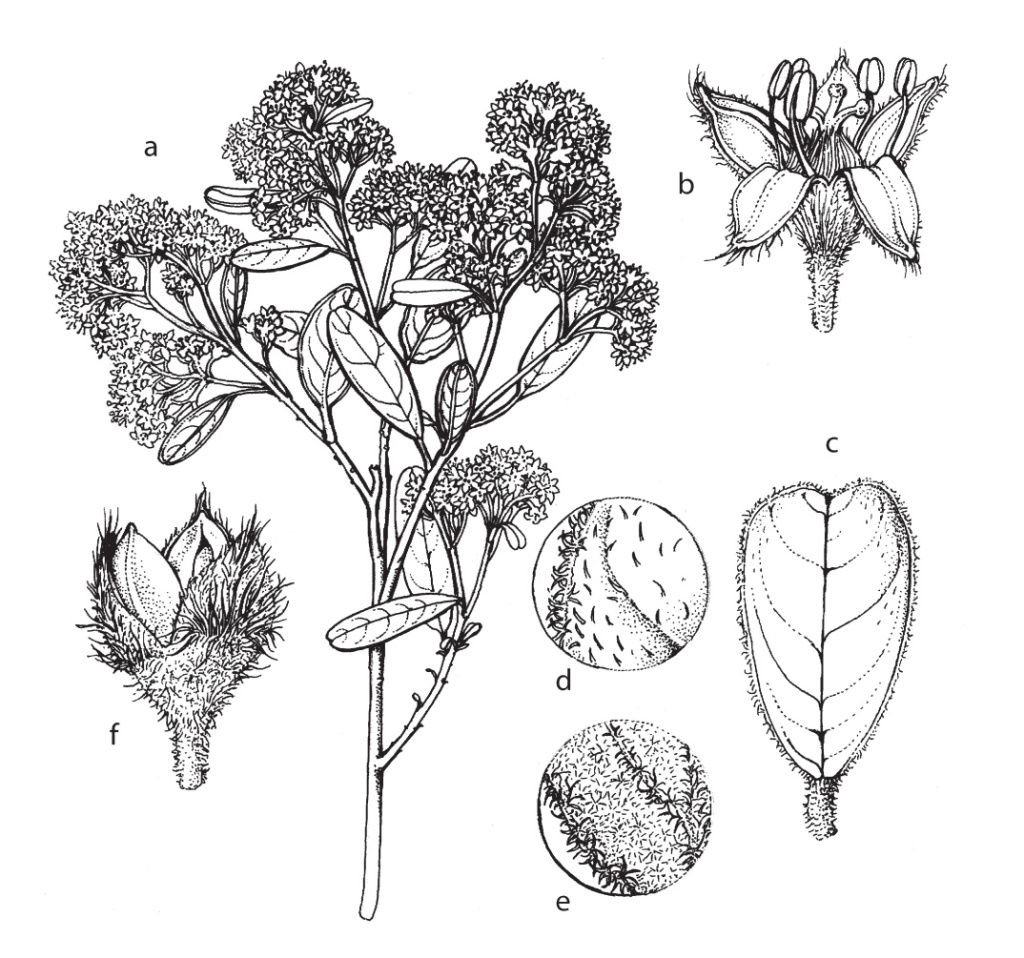Pomaderris briagolensis
MessinaShrub to 2 m high; branchlets pubescent with dense rusty stellate hairs. Leaves obovate, 12–24 mm long, 6–10 mm wide; apex obtuse to truncate or slightly emarginate; margins entire; upper surface glabrous or with sparse simple hairs, shining, secondary veins slightly impressed; lower surface densely covered with white stellate hairs, with scattered larger rusty stellate hairs on internerve spaces and covering veins and margin. Stipules linear-filiform to triangular 1–5 mm long, commonly persisting after leaves have fallen. Inflorescences compact, paniculate, terminal or axillary, pyramidal, to 40 mm long and 30 mm diameter; Bracts 2–3 mm long. Pedicels 1–2 mm long; hypanthium 1–1.5 mm long, densely covered with white stellate hairs and longer simple hairs; sepals 1.5–2 mm long, 0.8–1 mm wide, deciduous, outer surface covered by whitish stellate hairs and longer white and rusty simple hairs; petals absent; disc not apparent; ovary inferior, 1–1.5 mm diam., summit pubescent; style 0.7–1.7 mm long, 3-branched from near midway. Capsule 2.5–3 mm long; operculum membranous, c. half as long as nutlet. Seeds flattened-ellipsoid, 1.5–2 mm long. Sep.–Oct.
GipP, HSF. Very localised, known only from rocky sites or shallow soils Freestone Creek catchment near and upstream from Briagolong in eastern Victoria. Occurs in riparian scrubs and open forests.
Previously regarded as a small-leaved form of P. prunifolia.
 Spinning
Spinning
